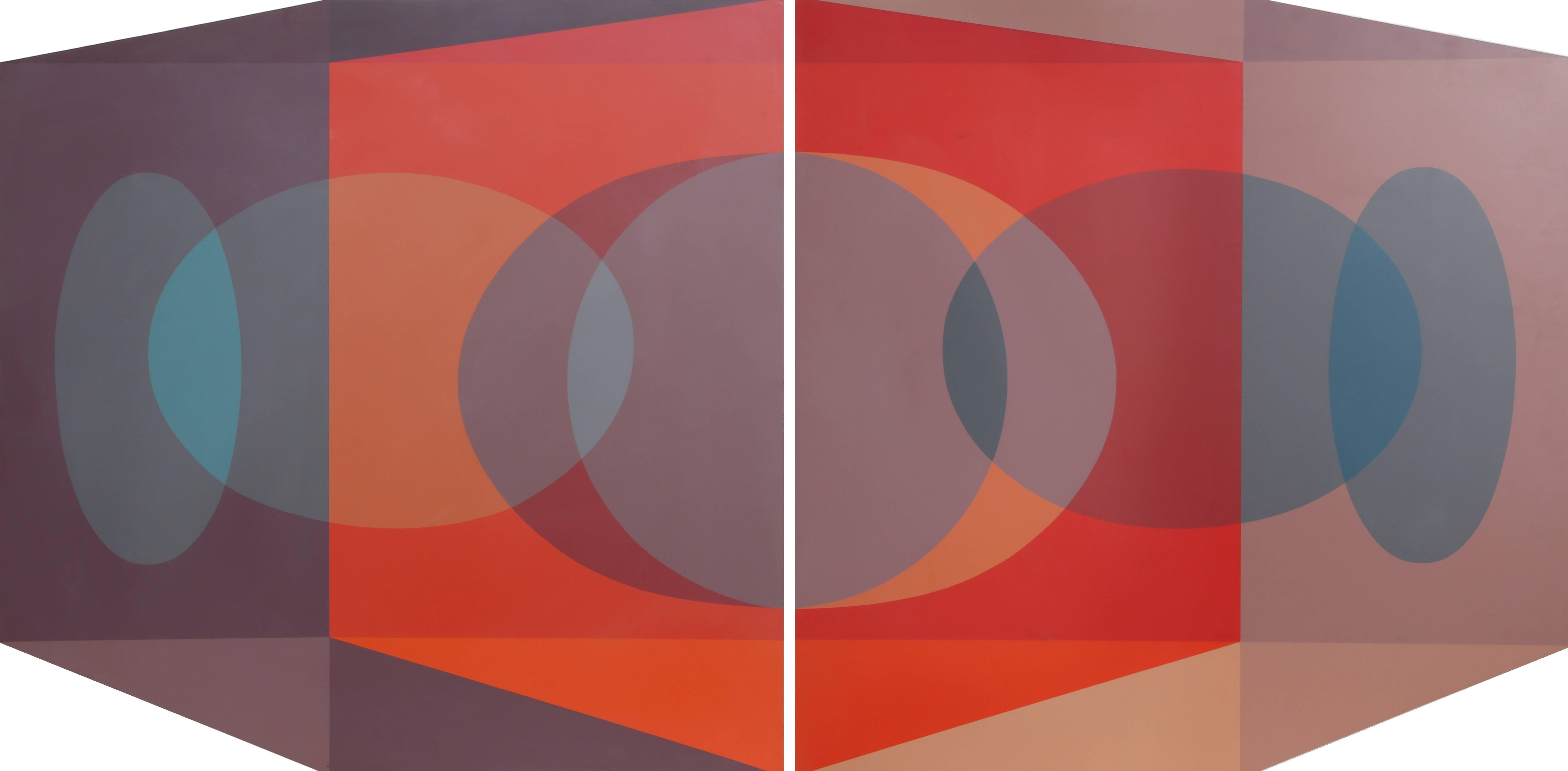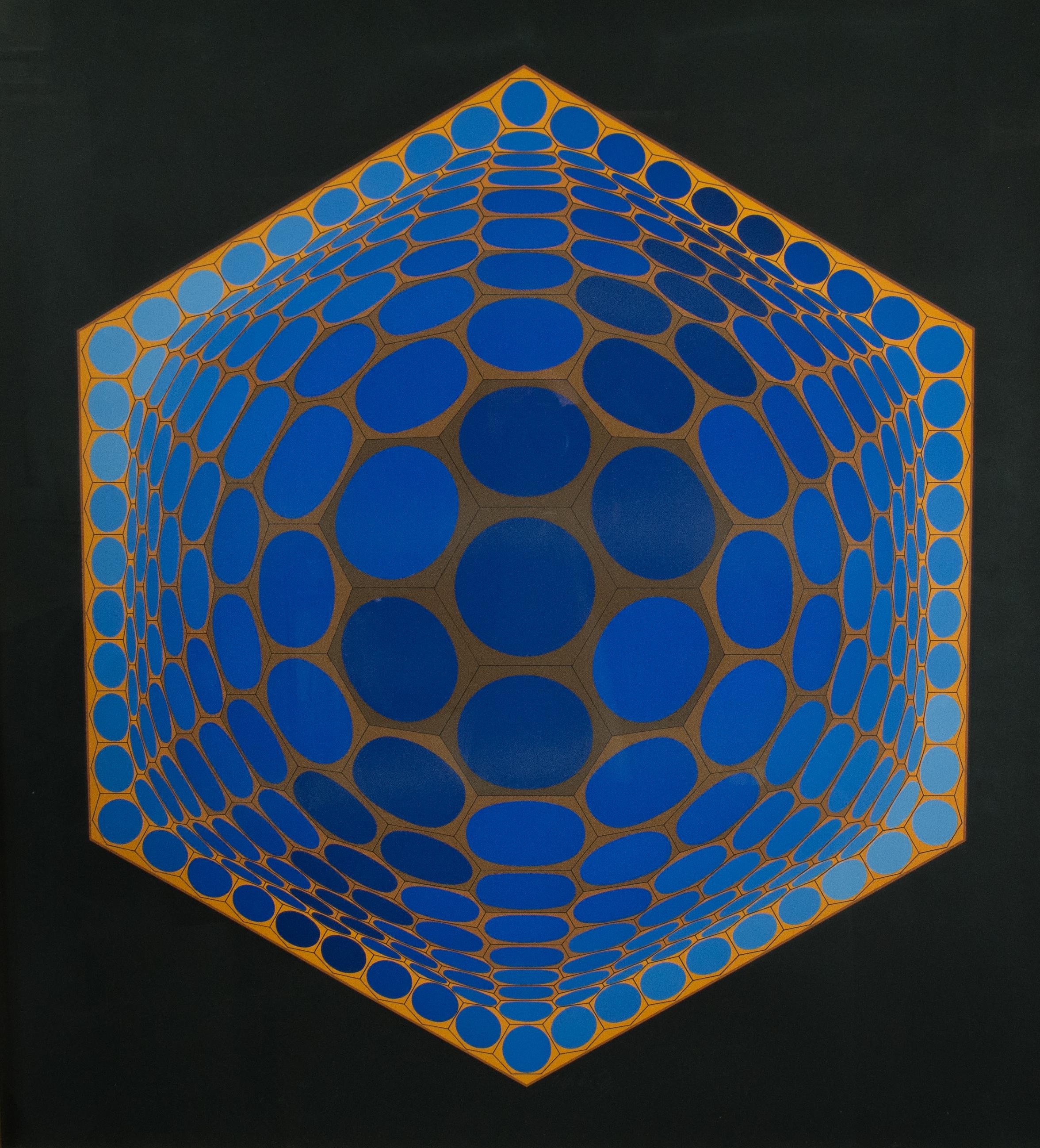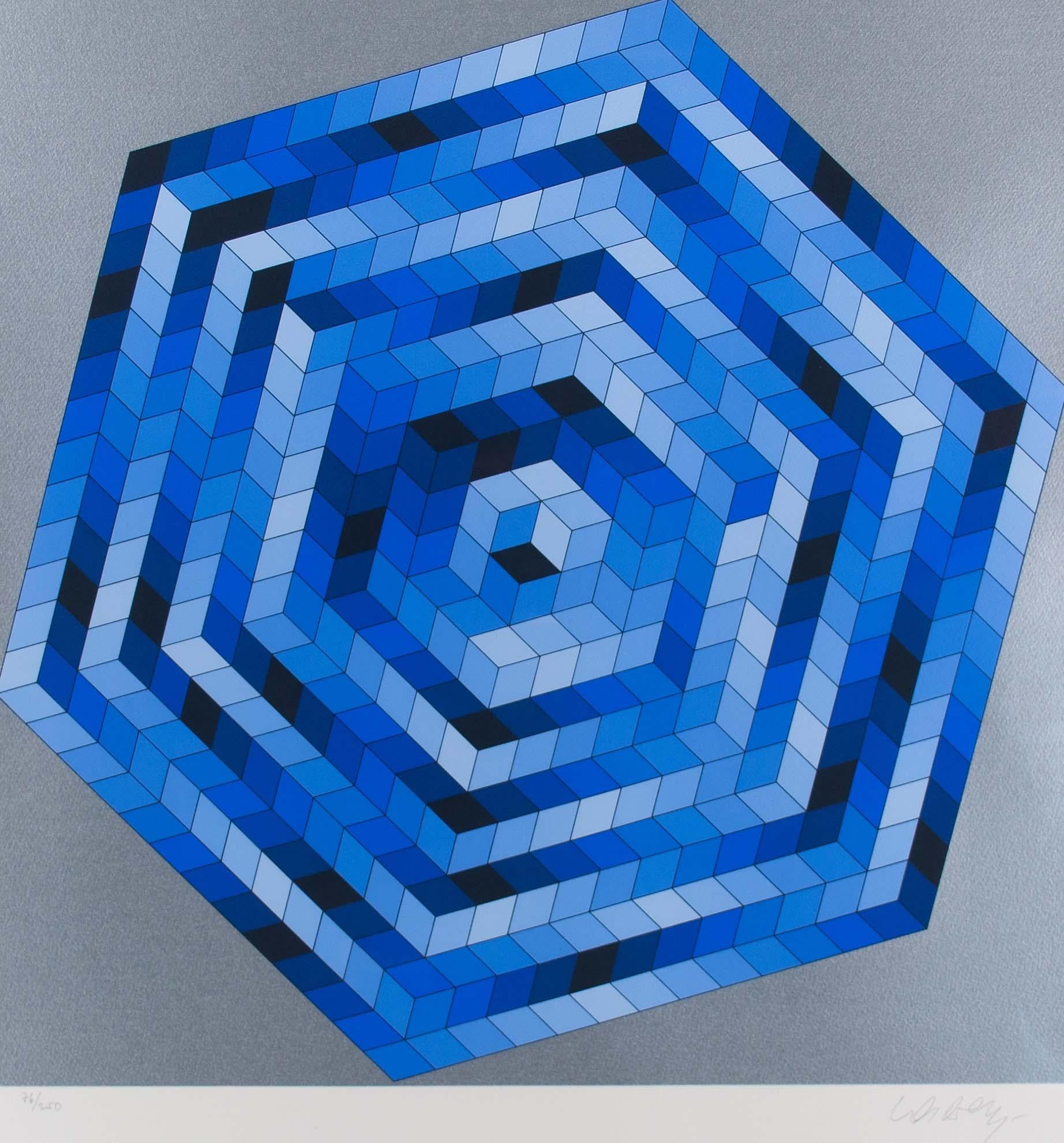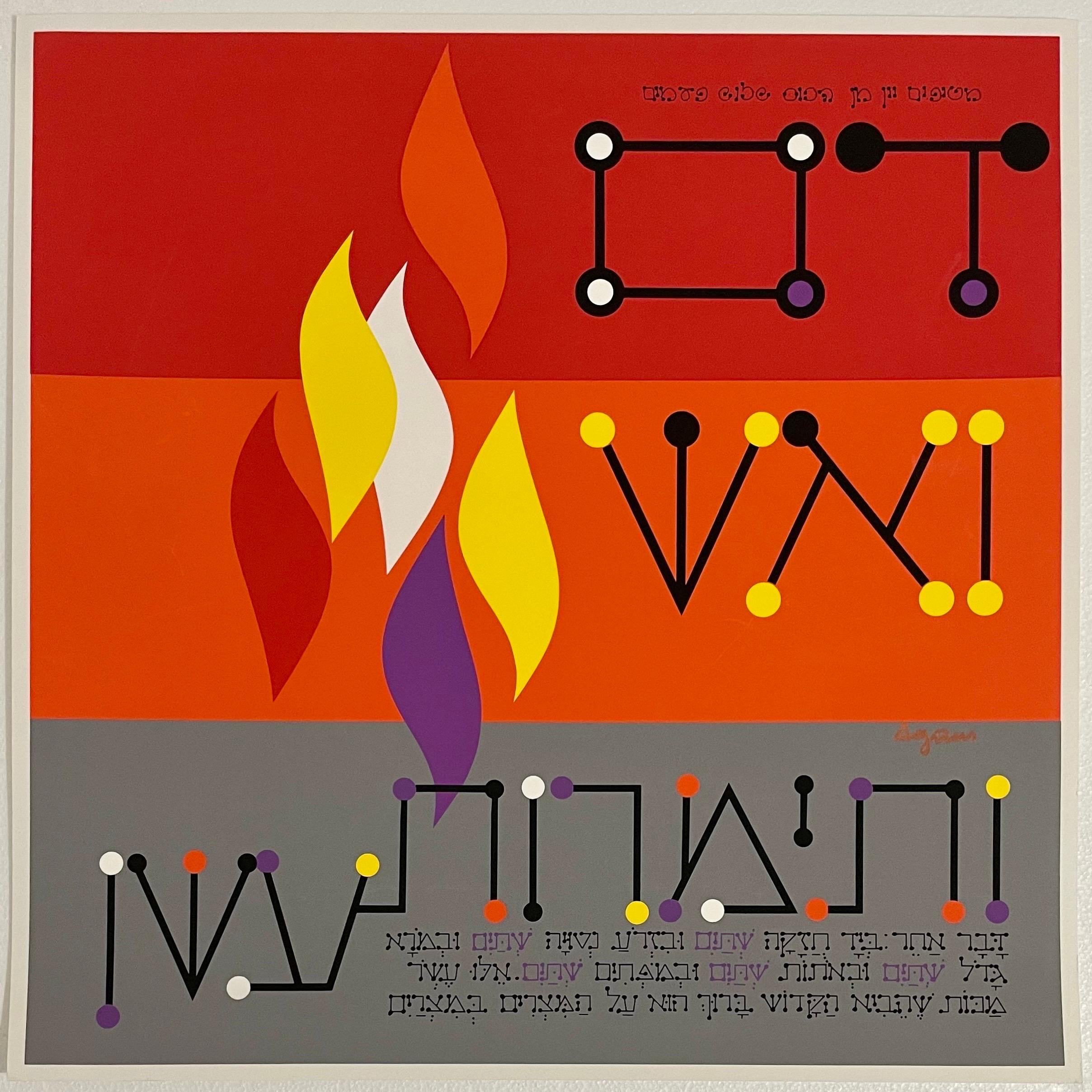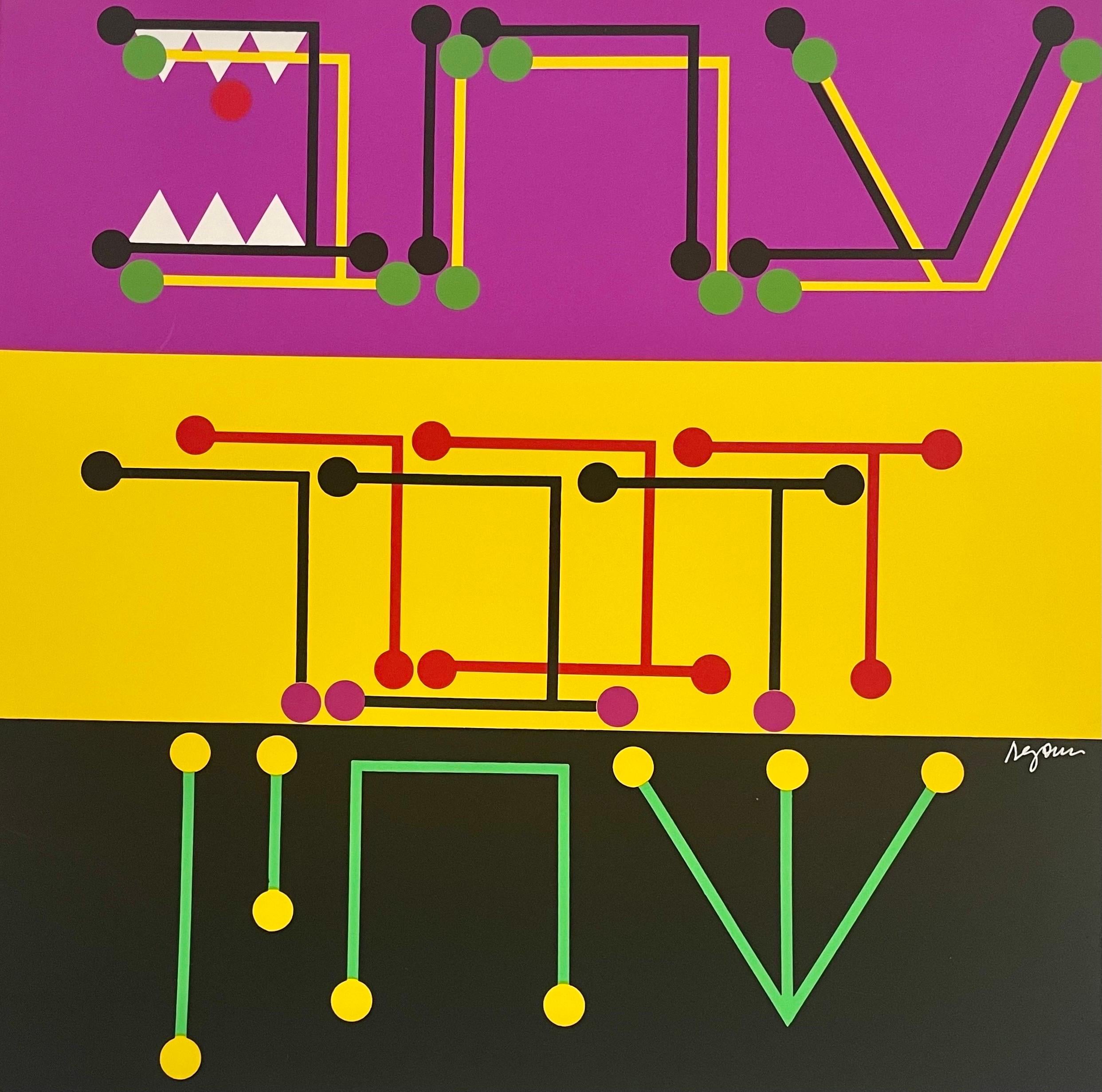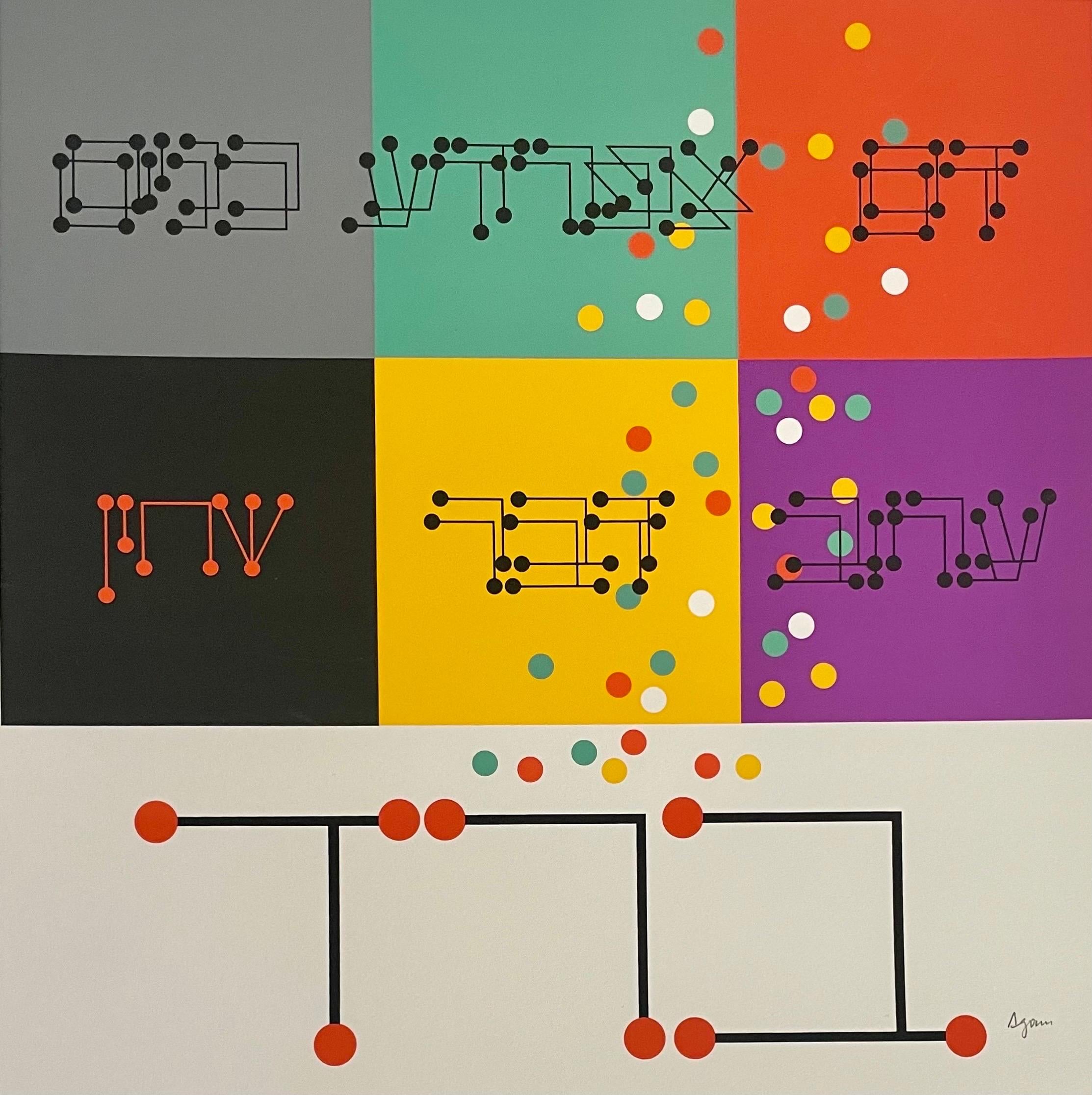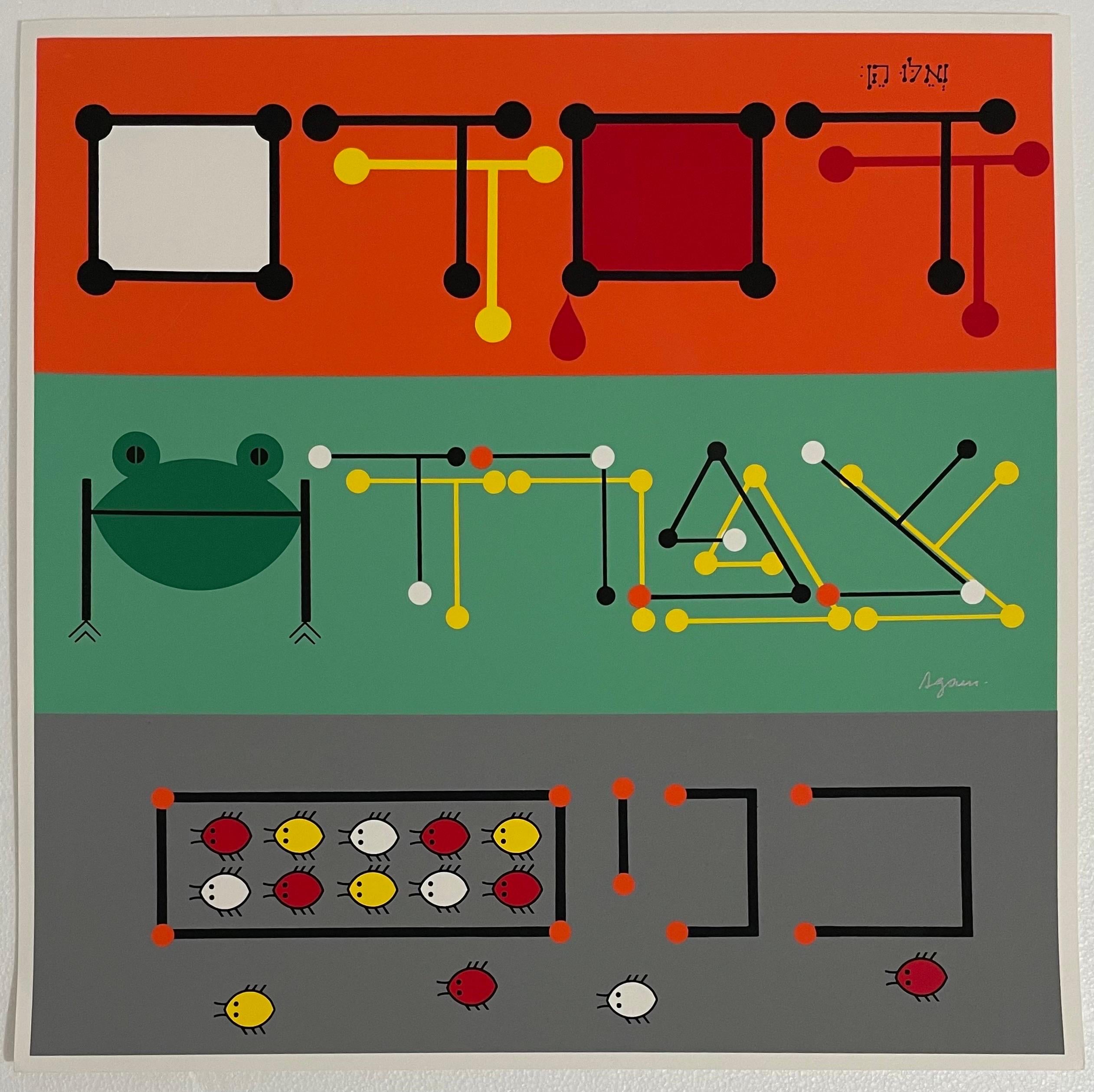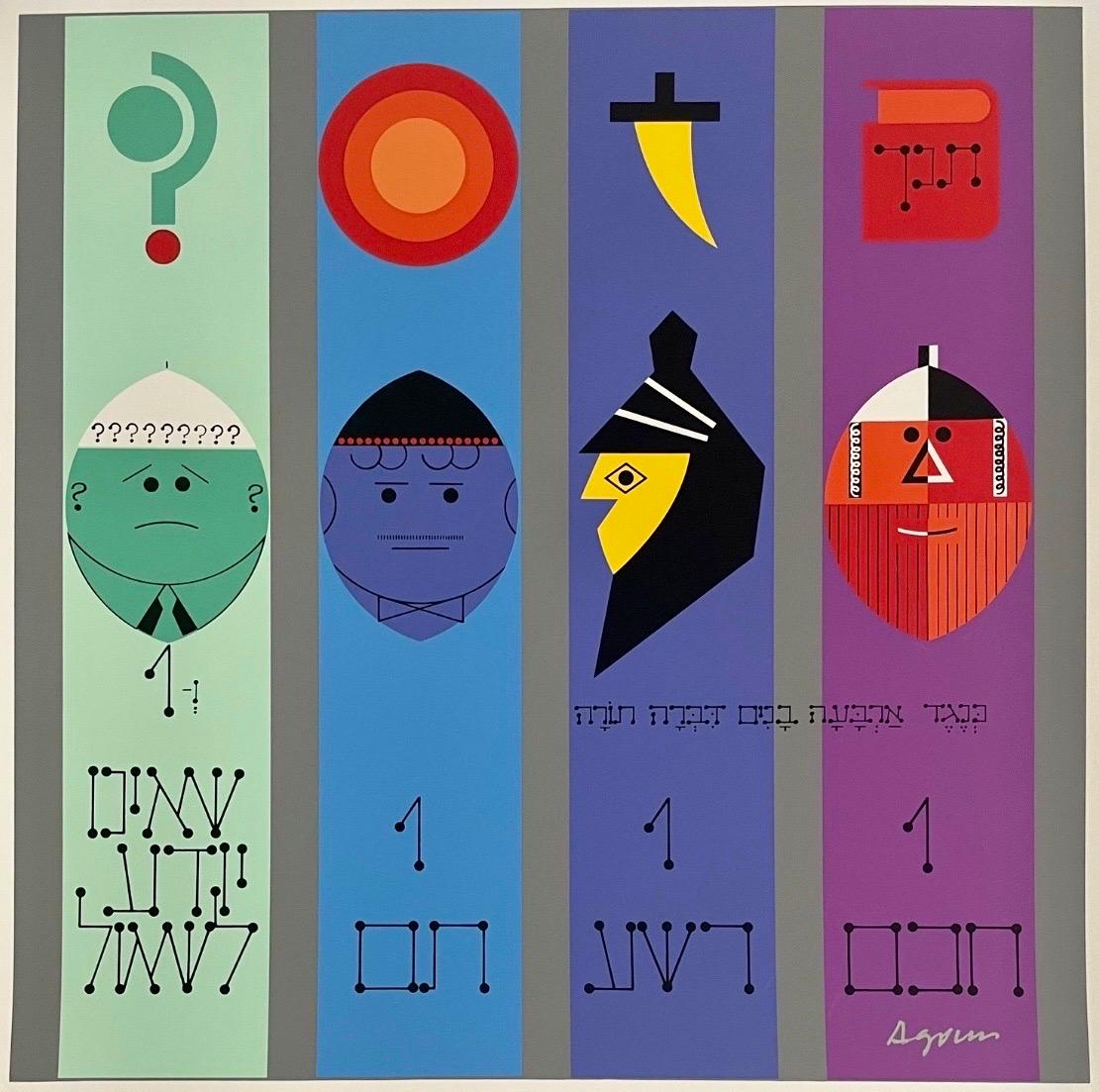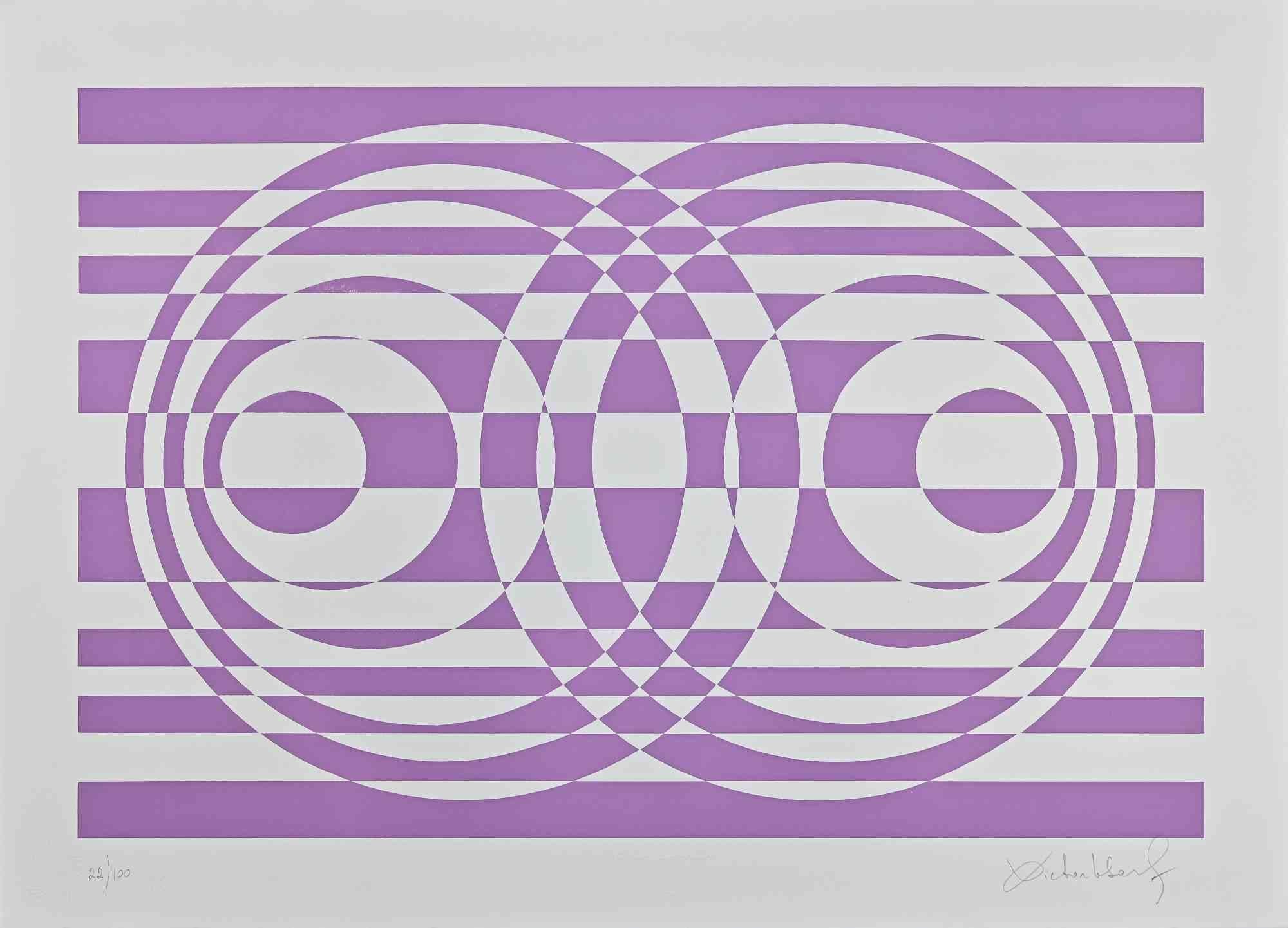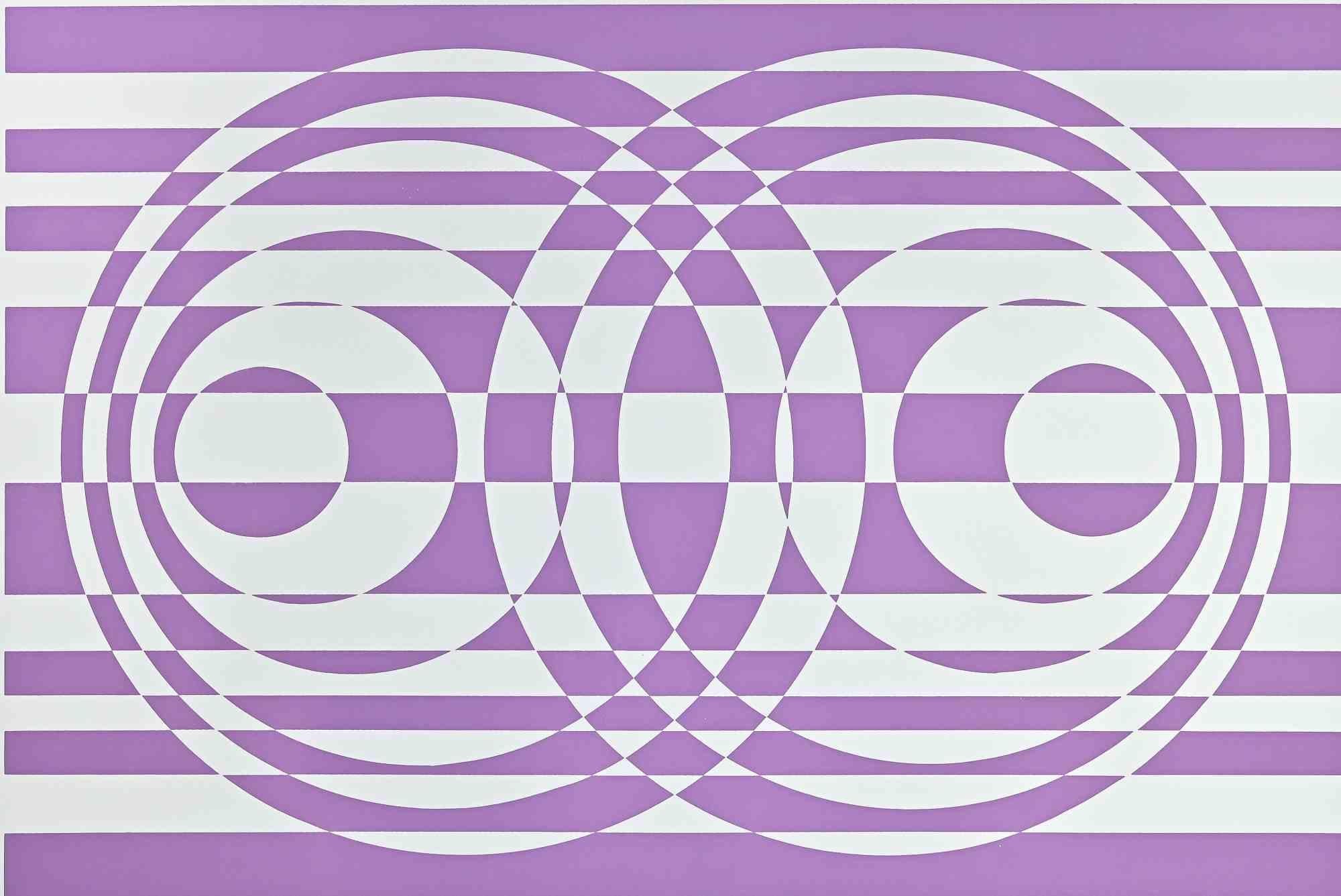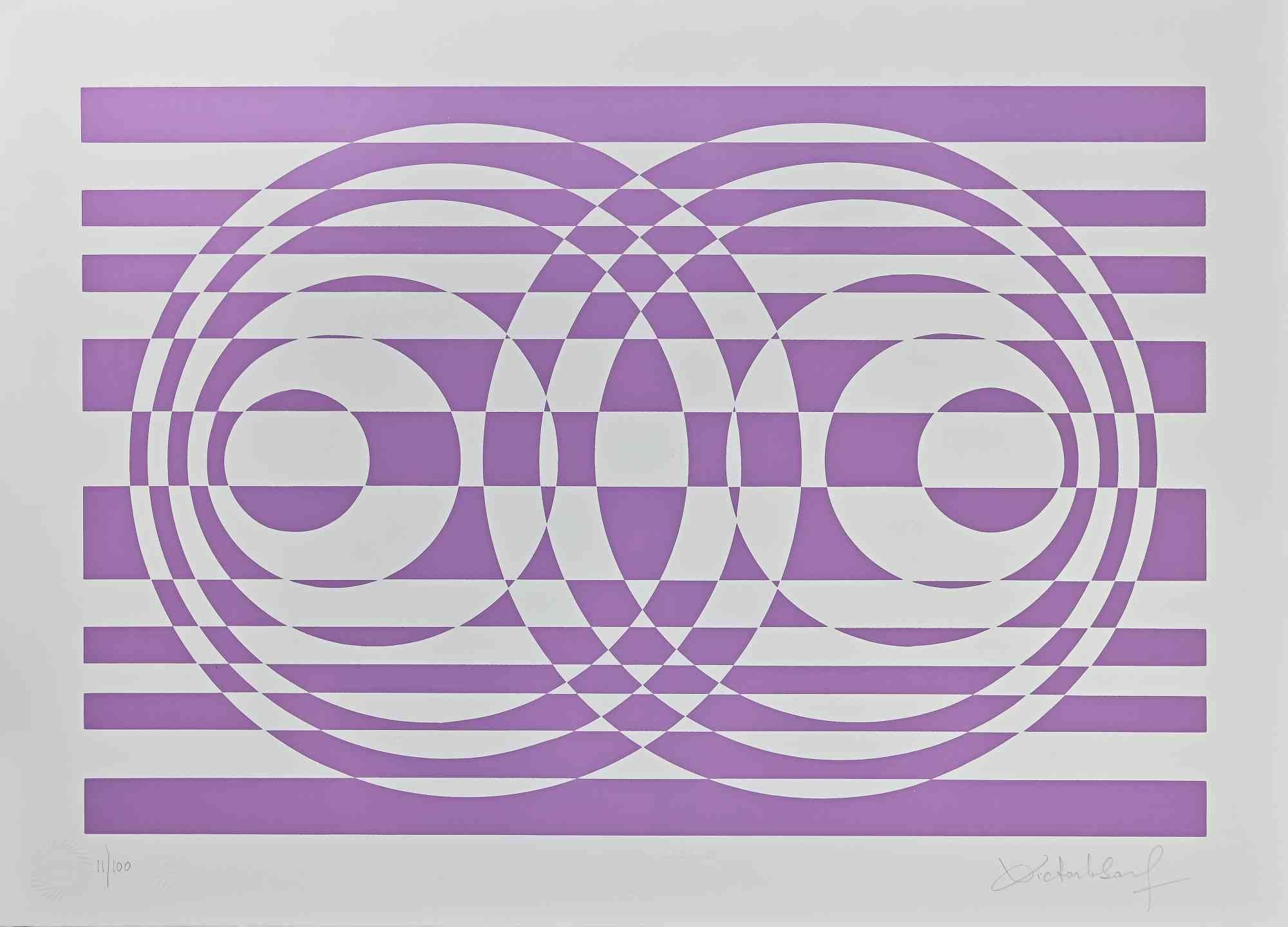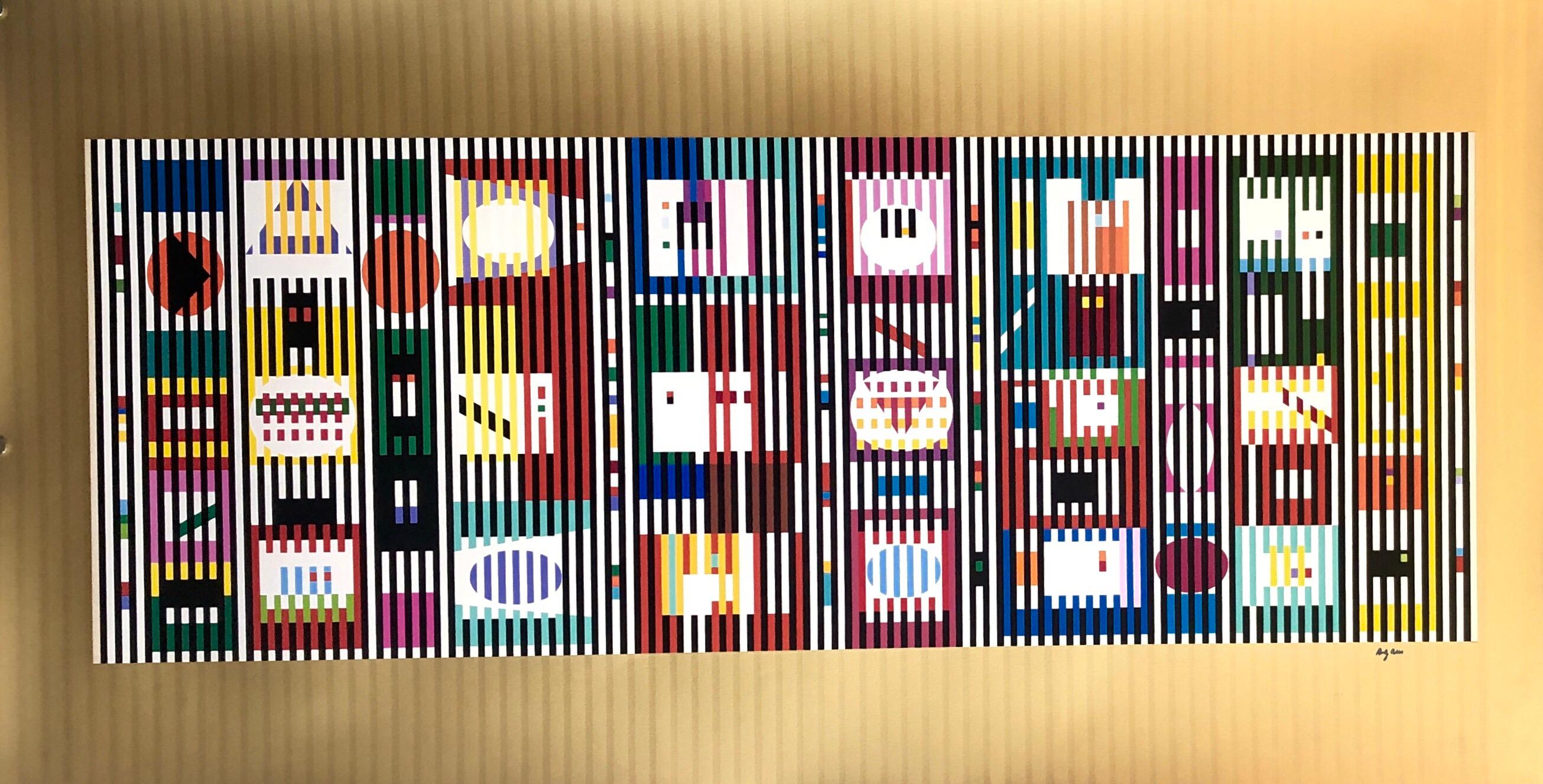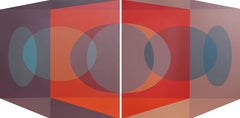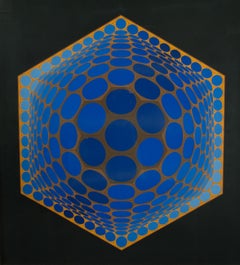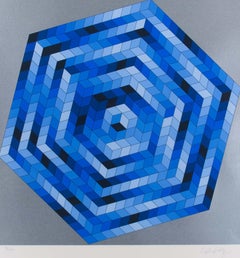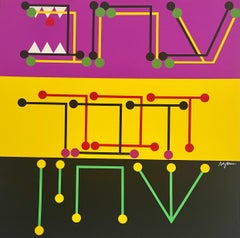Blue II
View Similar Items
Richard AnuszkiewiczBlue II1991
1991
About the Item
- Creator:Richard Anuszkiewicz (1930, American)
- Creation Year:1991
- Dimensions:Height: 32 in (81.28 cm)Width: 37 in (93.98 cm)
- Medium:
- Movement & Style:
- Period:
- Condition:
- Gallery Location:Long Island City, NY
- Reference Number:1stDibs: LU4661560813
Richard Anuszkiewicz
“I’m interested,” Richard Anuszkiewicz (1930–2020) once said, “in making something romantic out of a very, very mechanistic geometry.” Anuszkiewicz sought to achieve this romance through works juxtaposing vibrant colors in geometric configurations. The perceptual effects he created helped define the American Op art movement.
Anuszkiewicz studied color theory at Yale under Josef Albers and was greatly influenced by Albers’s approach. “The image in my work has always been determined by what I wanted the color to do,” Anuszkiewicz explained in a 1974 catalogue. “Color function becomes my subject matter, and its performance is my painting.”
He departed from his mentor, however, in the pulsating, illusory qualities he gave his work. One of his most famous paintings, Deep Magenta Square (1978), although similar in composition to Albers’s “Homage to the Square” series, is distinctly Op art in the way the striations surrounding the central square seem to vibrate and jump off the canvas.
Anuszkiewicz spent his entire career exploring optical effects through the manipulation of line and color, producing spectacular and timeless pieces of art. “Working with basic ideas will always be exciting,” he said in 1977. “And if a color or form is visually exciting in any profound sense, it will be that way in 10 or 20 years from now.”
Browse a variety of paintings and prints by Richard Anuszkiewicz at 1stDibs.
- Scarlet Tesseract CornerBy Ben CunninghamLocated in Long Island City, NYArtist: Ben Cunningham (American, 1904-1975) Title: Scarlet Tesseract Corner Year: circa 1970 Medium: Set of Two Silkscreens on Plastic Panel, signed and numbered verso Edition: 125 ...Category
1970s Op Art Abstract Prints
MaterialsScreen, Panel
- Probe, OP Art Silkscreen by Roy AhlgrenBy Roy AhlgrenLocated in Long Island City, NYArtist: Roy Ahlgren, American (1927 - 2011) Title: Probe Year: 1973 Medium: Silkscreen, signed, titled and numbered in pencil Edition: AP Image Size: 17 x 17 inches Size: 20 in. x 20...Category
1960s Op Art Abstract Prints
MaterialsScreen
- David Roth, Abstract Screenprint, 1979By David RothLocated in Long Island City, NYThis screenprint was created by American artist David Roth. Roth's images are proportioned according to a strict mathematical formula - the pictures are composed according to horizon...Category
1970s Op Art Abstract Prints
MaterialsScreen
- Gamut, Op Art Screenprint by Mark RowlandBy Frank RowlandLocated in Long Island City, NYArtist: Mark Rowland (American, 1953 - ) Title: Gamut Medium: Screenprint, signed, dated, and titled in pencil Edition 214/300 Size: 30 x 30 in. (76.2 x ...Category
1970s Op Art Abstract Prints
MaterialsScreen
- Graphic Tectonic: Prefacio - P1, F32, I2By Josef AlbersLocated in Long Island City, NYFrom the portfolio “Formulation: Articulation” created by Josef Albers in 1972. This monumental series consists of 127 original silkscreens that are a definitive survey of the artist...Category
1970s Op Art Abstract Prints
MaterialsScreen
- Graphic Tectonic: Prefacio - P1, F32, I1By Josef AlbersLocated in Long Island City, NYFrom the portfolio “Formulation: Articulation” created by Josef Albers in 1972. This monumental series consists of 127 original silkscreens that are a definitive survey of the artist...Category
1970s Op Art Abstract Prints
MaterialsScreen
- UntitledBy Victor VasarelyLocated in Ljubljana, SIUntitled. Original color silkscreen, cca. 1980. Edition of 200 signed and numbered impressions on Arches paper. Victor Vasarely was a French painter of Hungarian origin. Influenced b...Category
1980s Op Art Abstract Prints
MaterialsScreen
- UntitledBy Victor VasarelyLocated in Ljubljana, SIUntitled. Original color silkscreen, cca. 1980. Edition of 250 signed and numbered impressions on Arches paper. Victor Vasarely was a French painter of Hungarian origin. Influenced b...Category
1980s Op Art Abstract Prints
MaterialsScreen
- Agam Silkscreen Mod Judaica Lithograph Hand Signed Israeli Kinetic Op Art PrintBy Yaacov AgamLocated in Surfside, FLYaacov Agam Israeli (b. 1928) Hand signed, not individually numbered but from edition of 180. I can include a copy of the title sheet with the edition size and his signature if you r...Category
1980s Op Art Abstract Prints
MaterialsLithograph, Screen
- Agam Silkscreen Mod Judaica Lithograph Hand Signed Israeli Kinetic Op Art PrintBy Yaacov AgamLocated in Surfside, FLYaacov Agam Israeli (b. 1928) Hand signed, not individually numbered but from edition of 180. I can include a copy of the title sheet with the edition size and his signature if you request. sheet: 13.5 X 13.5 inches Some of these works have beautiful Hebrew calligraphy and mod imagery, animals, children and such that are not usually found in his work. This is a masterpiece of bold, graphic, mod design. Along with Reuven Rubin and Menashe Kadishman he is among Israel's best known artists internationally. Biographical info: The son of a rabbi, Yaacov Agam can trace his ancestry back six generations to the founder of the Chabad movement in Judaism. in 1946, he entered the Bezalel Academy of Arts and Design in Jerusalem. Studying with Mordecai Ardon, a former student at the Weimar Bauhaus. Yaakov Agam has been associated h with “abstract” artists, “hard edge” artists, and artists such as Josef Albers and Max Bill. Others find in Agam’s work an indebtedness to the masters of the Bauhaus. Agam’s approach to art, being conceptual in nature, has been likened to Marcel Duchamp’s, who expressed the need to put art “at the service of the spirit.” And, because of Agam’s employment of color and motion in his art, he has been compared to Alexander Calder, the artist who put sculpture into motion. (Motion is not an end, but a means for Agam. Calder’s mobiles are structures that are fixed, revolving at the whim of the wind. In a work by Agam, the viewer must intervene.) Agam has also been classified as an “op art” artist because he excels in playing with our visual sensitivities. Agam went to Zurich to study with Johannes Itten at the Kunstgewerbeschule. There, he met Frank Lloyd Wright and Siegfried Giedion, whose ideas on the element of time in art and architecture impressed him. In 1955, Galerie Denise René hosted a major group exhibition in connection with Vasarely's painting experiments with movement. in addition to art by Vasarely, it included works by Yaacov Agam, Pol Bury, Soto and Jean Tinguely, among others. Most Americans were first introduced to Vasarely by the groundbreaking exhibition, "The Responsive Eye," at New York's Museum of Modern Art in 1965. Josef Albers, Richard Anuszkiewicz. The show confirmed Vasarely's international reputation as the father of Op art. Agam has sought to express his ideas in a non-static form of art. In his abstract Kinetic works, which range from paintings and graphics to sculptural installations and building facades. Agam continually seeks to explore new possibilities in form and color and to involve the viewer in all aspects of the artistic process. Thus, for the past 40 years, Yaacov Agam’s pioneering ideas have impacted developments in art, (painting, monoprint, lithograph and agamograph) architecture, theatre, and public sculpture. Reflecting both his Israeli Jewish...Category
1980s Op Art Abstract Prints
MaterialsLithograph, Screen
- Agam Silkscreen Mod Judaica Lithograph Hand Signed Israeli Kinetic Op Art PrintBy Yaacov AgamLocated in Surfside, FLYaacov Agam Israeli (b. 1928) Hand signed, not individually numbered but from edition of 180. I can include a copy of the title sheet with the edition size and his signature if you r...Category
1980s Op Art Abstract Prints
MaterialsLithograph, Screen
- Agam Silkscreen Mod Judaica Lithograph Hand Signed Israeli Kinetic Op Art PrintBy Yaacov AgamLocated in Surfside, FLYaacov Agam Israeli (b. 1928) Hand signed, not individually numbered but from edition of 180. I can include a copy of the title sheet with the edition size and his signature if you request. sheet: 13.5 X 13.5 inches Some of these works have beautiful Hebrew calligraphy and mod imagery, animals, children and such that are not usually found in his work. This is a masterpiece of bold, graphic, mod design. Along with Reuven Rubin and Menashe Kadishman he is among Israel's best known artists internationally. Biographical info: The son of a rabbi, Yaacov Agam can trace his ancestry back six generations to the founder of the Chabad movement in Judaism. in 1946, he entered the Bezalel Academy of Arts and Design in Jerusalem. Studying with Mordecai Ardon, a former student at the Weimar Bauhaus. Yaakov Agam has been associated h with “abstract” artists, “hard edge” artists, and artists such as Josef Albers and Max Bill. Others find in Agam’s work an indebtedness to the masters of the Bauhaus. Agam’s approach to art, being conceptual in nature, has been likened to Marcel Duchamp’s, who expressed the need to put art “at the service of the spirit.” And, because of Agam’s employment of color and motion in his art, he has been compared to Alexander Calder, the artist who put sculpture into motion. (Motion is not an end, but a means for Agam. Calder’s mobiles are structures that are fixed, revolving at the whim of the wind. In a work by Agam, the viewer must intervene.) Agam has also been classified as an “op art” artist because he excels in playing with our visual sensitivities. Agam went to Zurich to study with Johannes Itten at the Kunstgewerbeschule. There, he met Frank Lloyd Wright and Siegfried Giedion, whose ideas on the element of time in art and architecture impressed him. In 1955, Galerie Denise René hosted a major group exhibition in connection with Vasarely's painting experiments with movement. in addition to art by Vasarely, it included works by Yaacov Agam, Pol Bury, Soto and Jean Tinguely, among others. Most Americans were first introduced to Vasarely by the groundbreaking exhibition, "The Responsive Eye," at New York's Museum of Modern Art in 1965. Josef Albers, Richard Anuszkiewicz. The show confirmed Vasarely's international reputation as the father of Op art. Agam has sought to express his ideas in a non-static form of art. In his abstract Kinetic works, which range from paintings and graphics to sculptural installations and building facades. Agam continually seeks to explore new possibilities in form and color and to involve the viewer in all aspects of the artistic process. Thus, for the past 40 years, Yaacov Agam’s pioneering ideas have impacted developments in art, (painting, monoprint, lithograph and agamograph) architecture, theatre, and public sculpture. Reflecting both his Israeli Jewish...Category
1980s Op Art Abstract Prints
MaterialsLithograph, Screen
Recently Viewed
View AllRead More
Get to Know the Artists Who Led the Op Art Movement
In the 1960s and '70s, the hypnotic creations of Op artists went mainstream and influenced the look of pop culture.
Chryssa’s 1962 Neon Sculpture Was Way ahead of the Art-World Curve
By working with lettering, neon and Pop imagery, Chryssa pioneered several postmodern themes at a time when most male artists detested commercial mediums.
